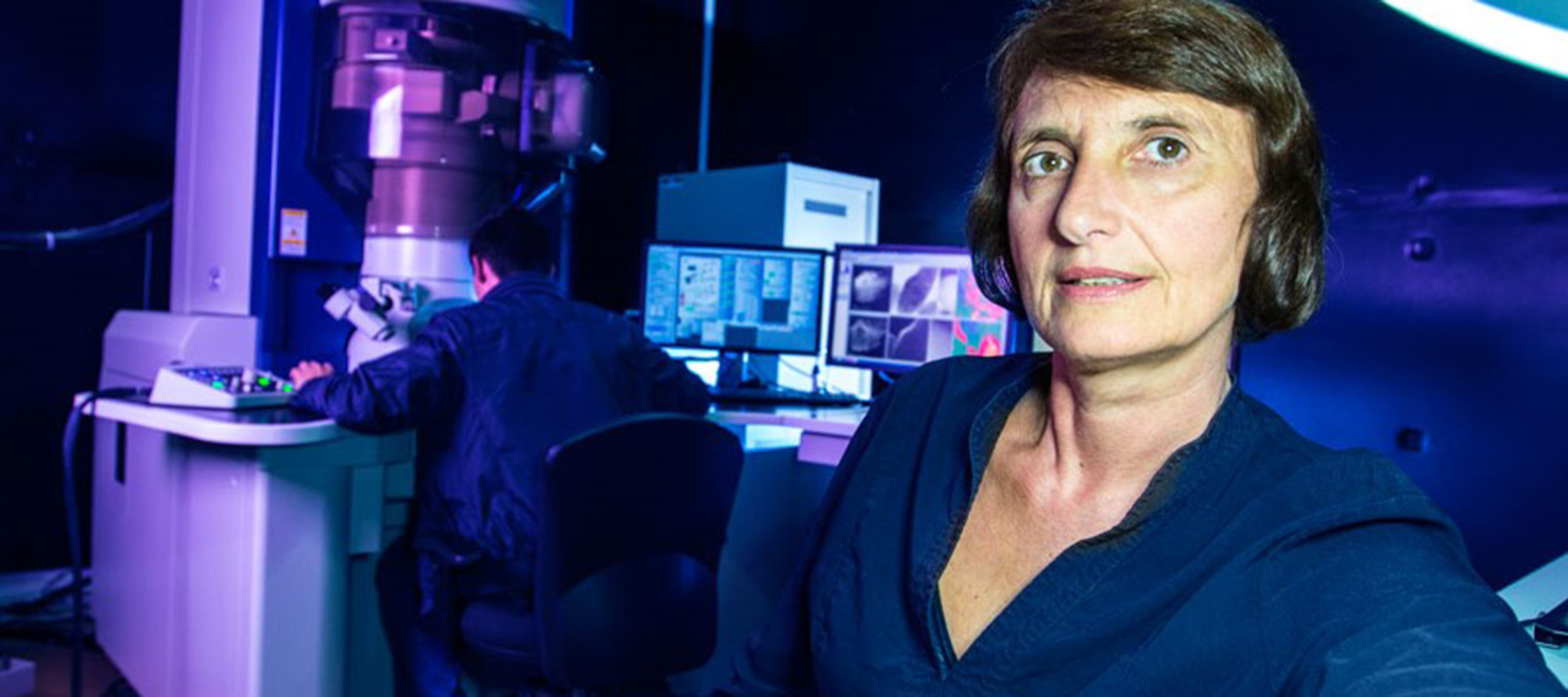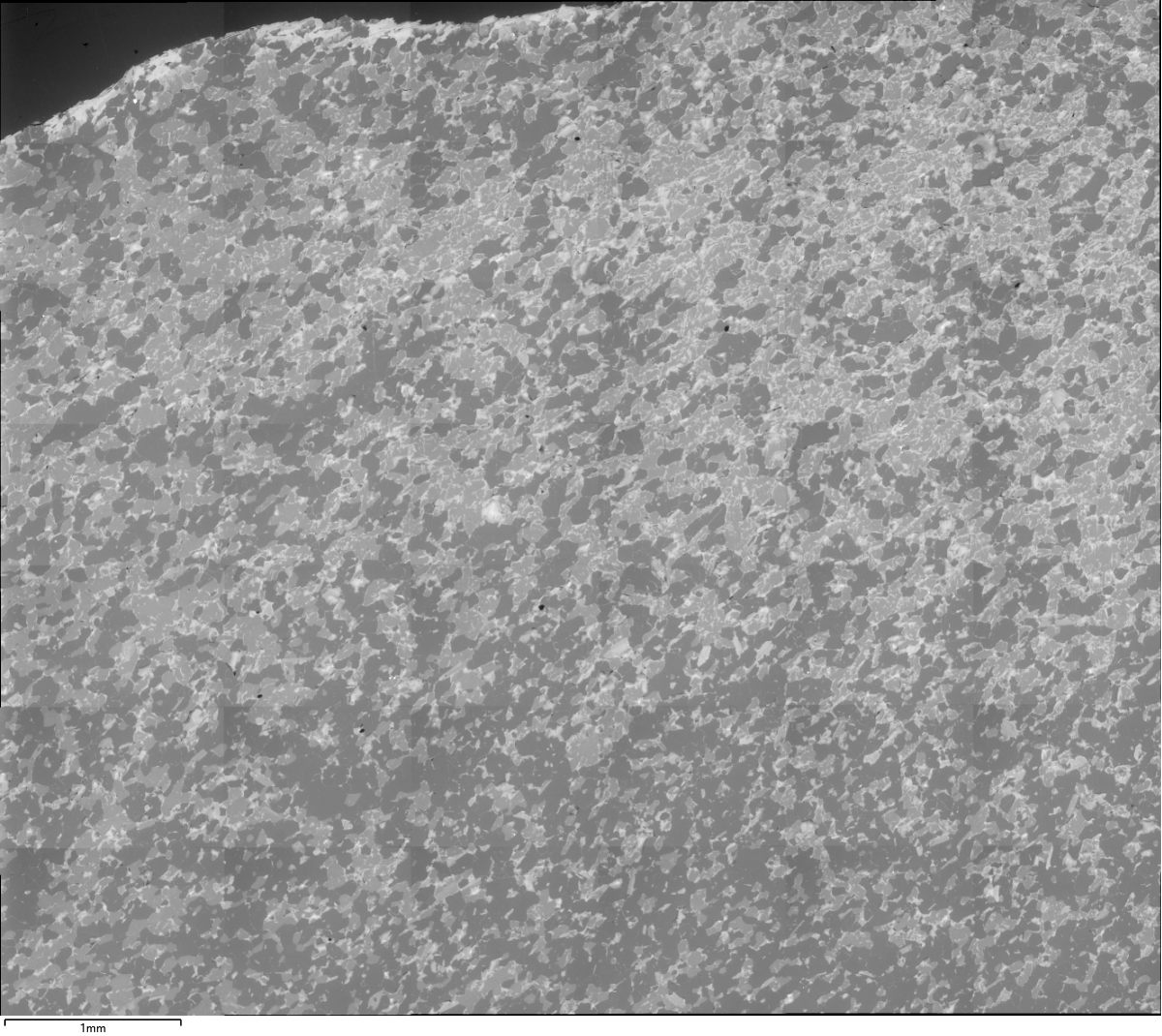With both facilities housed in purpose built buildings and supported by strong technical teams, they provide access to equipment supported by complete workflows and training environments.

Director of Molecular Horizons Prof. Antoine van Oijen with the FEI Talos Arctica cryo electron microscope housed at the facility

Molecular horizons installed a ultra high resolution cryo-electron microscope, the Titan Krios, earlier this year
Molecular Horizon’s cryo-EM facility provides a full ‘sample-to-structure’ service for those external users with limited experience with cryo-EM and more tailored services, such as direct equipment access, for those with experience. The University of Wollongong’s cryo-EM facility collaborates with Thermo Fischer, to provide training workshops for external users focused on the various aspects of the cryo-EM workflow.
The materials-science-focused Electron Microscopy Centre (EMC) supports researchers at the University of Wollongong, external researchers, industry clients and collaborators by providing specialised, high quality microscopy and microanalysis expertise, training and services.
The EMC comprises seven microscopy suites and specimen preparation laboratories, supported by six electron microscopy specialists.

Prof. Elena Pereloma, director of the University of Wollongong Electron Microscopy Centre
In an extraordinary find, a team of Australian researchers uncovered the world’s oldest fossils in a remote area of Greenland, capturing the earliest history of the planet and demonstrating that life on Earth emerged rapidly: at least 3.7 billion years ago.
Led by the University of Wollongong’s (UOW) Prof. Allen Nutman, the team discovered stromatolite fossils in the Isua Greenstone Belt, the world’s oldest sedimentary rocks, along the edge of Greenland’s icecap. The Isua stromatolite fossils predated the world’s previous oldest stromatolite fossils – which were found in Western Australia – by 220 million years.
Scanning electron microscopy at UOW’s EMC revealed that despite mild metamorphism the stromatolites retained their finely layered internal structure, which was created as the organism grew.

SEM backscattered electron image of the stromatolite. Variation in brightness is governed by quartz (duller) versus dolomite (brighter) grains.
The findings were outlined in a study published in Nature, with co-authors A/Prof. Vickie Bennett (ANU), Prof. Martin Van Kranendonk (UNSW), and Prof. Allan Chivas (UOW).
“Stromatolites not only provide obvious evidence of ancient life that is visible with the naked eye, but that they are complex ecosystems. This indicates that as long as 3.7 billion years ago microbial life was already diverse.” Prof. Nutman said.
A/Prof. Vickie Bennett, from ANU said, “Rather than speculating about potential early environments, for the first time we have rocks that we know record the conditions and environments that sustained early life.”
Prof. Martin Van Kranendonk, Director of the Australian Centre for Astrobiology at UNSW, said it was a ground-breaking find that could point to similar life structures on Mars, which 3.7 billion years ago was a damp environment.
“The structures and geochemistry from newly exposed outcrops in Greenland display all of the features used in younger rocks to argue for a biological origin,” Prof. Van Kranendonk said.
L-R Dr James Bouwer, Dr Gilberto Casillas Garcia, Dr Azdiar Gazder and Dr Simon Brown from the Molecular Horizon's CryoEM facility and UoW Electron Microscopy Centre
September 23, 2020